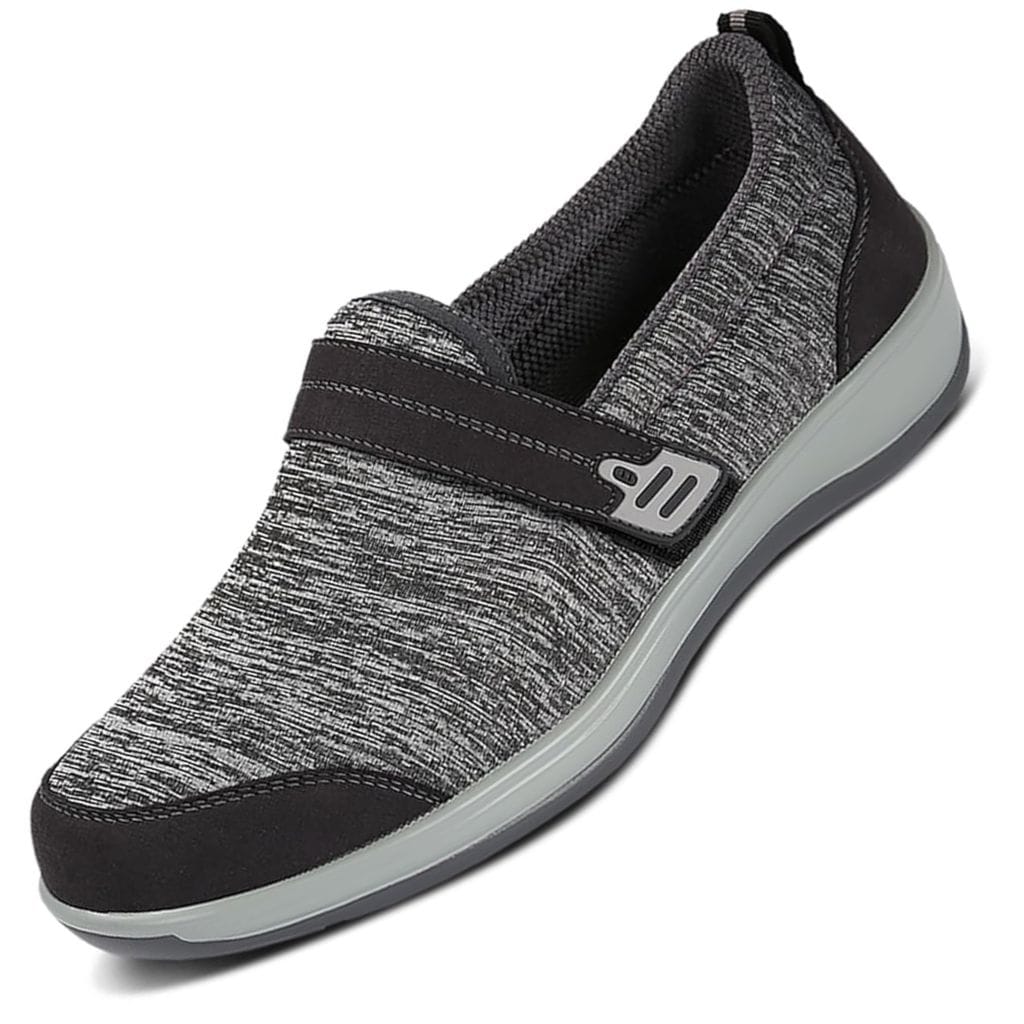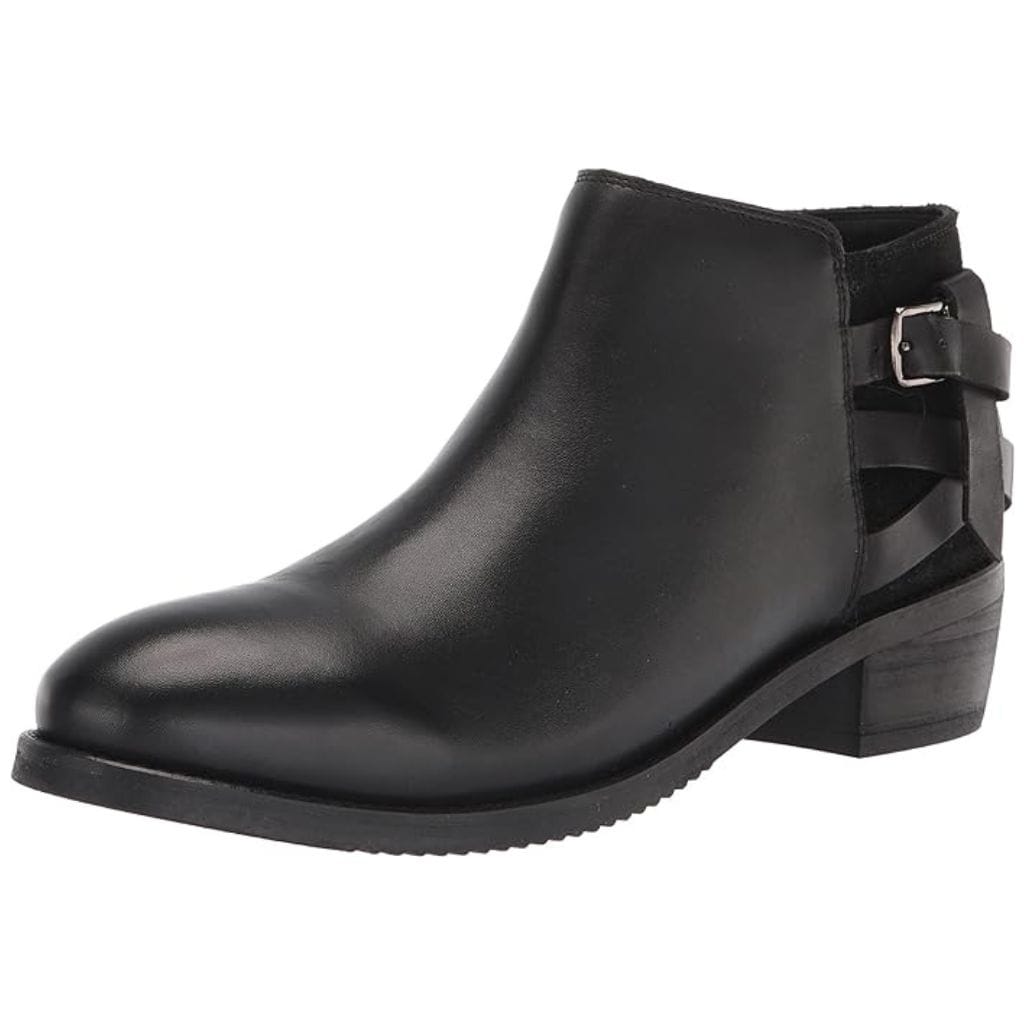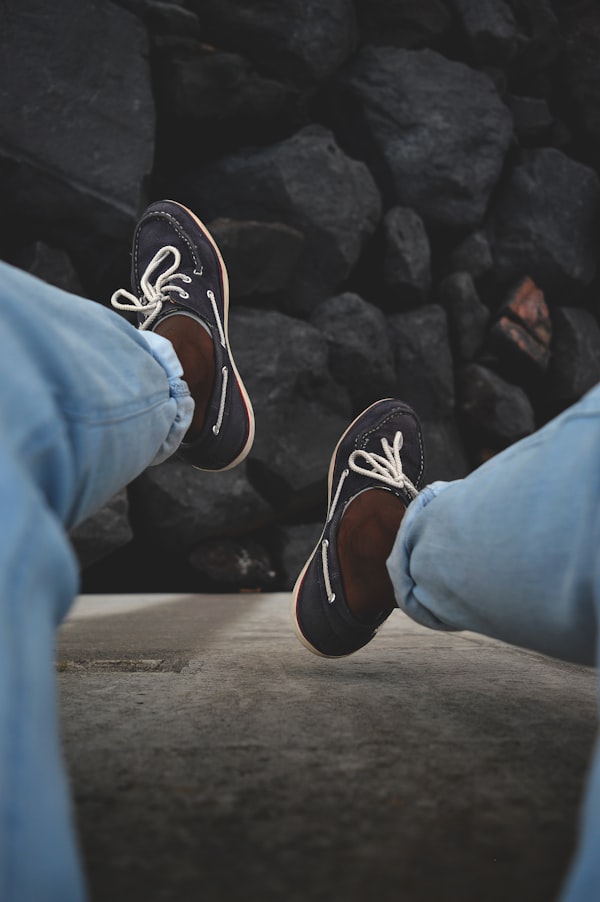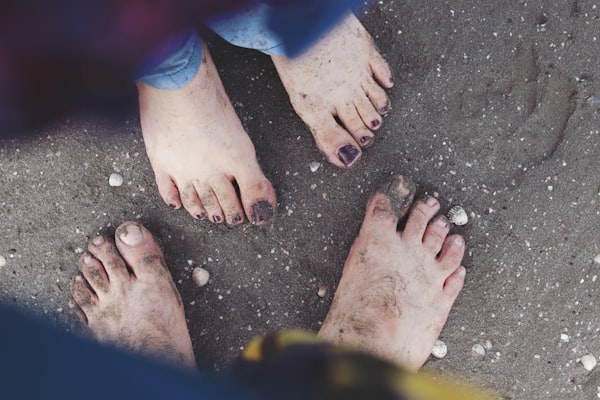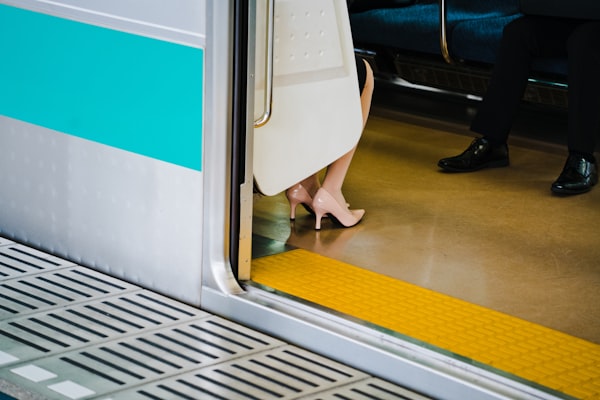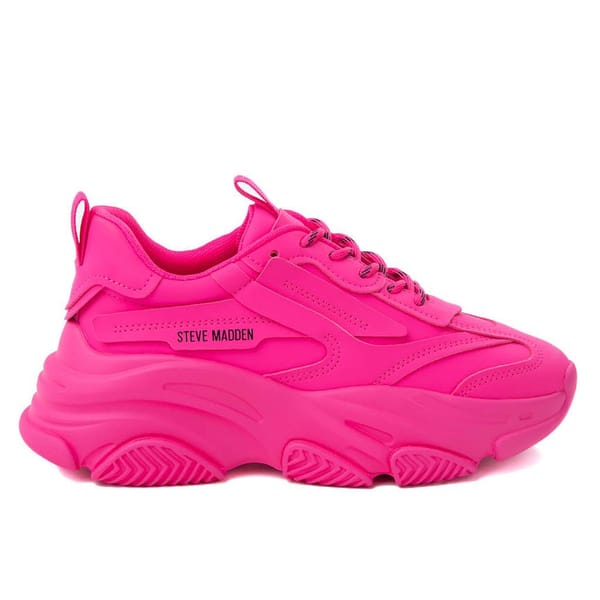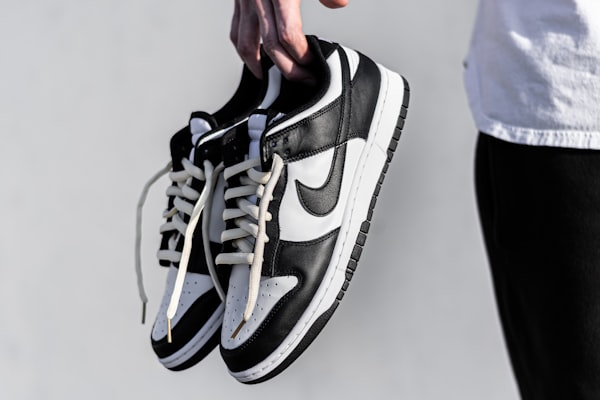The accessory navicular is extra cartilage or bone above the foot's arch.
Although the accessory navicular is not part of the typical bone structure, it often goes unnoticed until symptoms develop during adolescence or adulthood- after injury disrupts the fibrous tissue between the navicular and the accessory navicular bones. This is when Accessory Navicular Syndrome (ANS) develops.

Pain and discomfort can be ongoing or flair up after the physical activity. While some prefer custom-molded orthotics to provide relief, these can be costly and entail many appointments with a podiatrist to get the right fit.
As an alternative, we’ve researched and compiled a list of shoes that will ease your pain and be delivered to your door in just a few days.
How We Choose
With so many shoes on the market, finding a pair with all the features necessary for alleviating the pain and discomfort of Accessory Navicular Syndrome can be overwhelming. We’ve done all the hard work, so you don’t have to.
We consulted top industry experts to identify the criteria for shoes to provide ANS symptom relief. These criteria fall into four categories fit, features, brand reputation, and cost.
We then compared hundreds of brands and models against our list of criteria to find the best shoes that won’t hurt your feet or aggravate your condition.
We compiled our findings into a comprehensive list and included essentials on why we think they are FrontPage worthy and what else you should know.
Our Top Picks
Later we’ll dive into the specific criteria of each category (fit, features, brand reputation, and cost), but for now, let’s get right into our findings.
When choosing a pair of shoes, you must consider the occasion for which you’ll wear them. Brands spend a lot of time and effort designing models for specific uses.
Our picks, therefore, are geared toward all the different activities you might be looking to do. No matter the occasion, we’ve got you covered.
*As an Amazon Associate, we earn a small commission from qualifying purchases at no cost to you.
Why It's FrontPage Worthy
This lifestyle shoe’s design includes a roomy toe box, offering ample space that reduces pressure on the navicular area. The shoe's supportive footbed is essential for maintaining proper foot alignment and managing ANS symptoms. Its cushioned insole and shock-absorbing rocker bottom also ensure comfort and minimize impact on the foot, mitigating pain and discomfort associated with the syndrome. The waterproof feature also provides practicality for varied environments, making it a versatile choice for everyday wear.
What You Should Know
- Brand Excellence: Dansko is renowned for its commitment to comfort and support, particularly for professionals who spend long hours on their feet. The brand's focus on ergonomic design, arch support, and durable construction makes it a favored choice for healthcare and hospitality workers.
- Materials: Made from various types of leather, including waterproof leather, pull-up leather, patent leather, and tooled leather. This variety ensures both durability and style, with waterproof options providing practicality for different work environments.
- Sizes and Widths: Offered in sizes 4.5 through 13, including half sizes, and two width options, including wide width.
- Colors and Finishes: Available in a wide range of colors and finishes. This variety allows customers to choose clogs that fit their personal style and professional requirements.
Why It's FrontPage Worthy
These sneakers are ideal for individuals with ANS due to their unique orthotic support. They feature an anatomical arch support and cushioning heel pad that conforms to the contours of the foot, providing relief and comfort. The stretch knit fabric adapts to the foot's shape, reducing pressure on sensitive areas, while the extra depth design and wide toe box ensure a non-binding fit, crucial for those with ANS. Their ergonomic sole with air cushioning enhances stability and facilitates natural foot motion, making them a beneficial choice for sufferers.
What You Should Know
- Brand Excellence: Orthofeet is known for its advanced comfort footwear designed to alleviate foot and heel pain. Their shoes are engineered with ergonomic soles and anatomical orthotic insoles, offering relief for a range of conditions, including plantar fasciitis, arthritis, diabetes, and neuropathy. This focus on comfort and health benefits makes it an excellent brand for those in need of specialized foot care.
- Materials: Featuring stretchable uppers, likely made from a knit fabric, which provides a flexible fit that accommodates different foot shapes and sizes. This stretchable design is particularly beneficial for conditions like bunions, hammertoes, and swelling.
- Sizes and Widths: Offered in sizes 5 through 12, including half sizes, and five widths to accommodate different foot shapes.
- Colors and Finishes: Available in multiple colors, the stretch knit design offers a modern and sleek look and provides comfort and adaptability to different foot conditions.
Why It's FrontPage Worthy
This athletic shoe incorporates a cushioned footbed, which provides excellent arch support, crucial for alleviating stress on the navicular area. Its breathable mesh upper and padded tongue offer a comfortable, irritation-free fit, especially important for sensitive feet. Furthermore, the shoe's wide toe box prevents crowding, reducing pressure on the navicular bone, while the shock-absorbing sole ensures a gentle impact with each step, making it a thoughtful choice for those managing ANS symptoms.
What You Should Know
- Brand Excellence: SAS (San Antonio Shoemakers) is renowned for its commitment to handcrafted quality, comfort, and fit. Each pair of SAS shoes undergoes approximately 100 different steps during its production, emphasizing the brand's dedication to quality. This level of craftsmanship ensures that the shoes are not only durable but also extremely comfortable, making them an excellent choice for those who prioritize foot health and comfort.
- Materials: Features an upper made of leather and mesh. This combination offers durability and breathability, making them suitable for various activities. The shoes are designed to follow the natural shape of the foot, providing all-day comfort and support.
- Sizes and Widths: Offered in sizes 4 through 12, including half sizes, and six widths to accommodate different foot shapes.
- Colors and Finishes: Available in various colors, providing a range of options to suit different style preferences and occasions.
Why It's FrontPage Worthy
The design of this ballet flat includes a cushioned footbed with arch support, essential for reducing strain on the navicular area. Its soft, flexible upper material allows for a gentle, non-restrictive fit around the foot, minimizing pressure and irritation. The low heel and broad toe box also provide a stable base and ample room, preventing excessive pressure on sensitive areas. These features combine to make this shoe a comfortable and practical choice for those managing ANS symptoms.
What You Should Know
- Brand Excellence: Trotters is known for combining style and comfort in their footwear, with an emphasis on fitting a variety of foot shapes and sizes. Their commitment to quality materials and detailed craftsmanship makes them a preferred brand for those seeking both elegance and comfort.
- Materials: Features a man-made upper and a soft microfiber lining, providing both durability and comfort. It also has a molded rubber unit sole for reliable traction and support.
- Sizes and Widths: Offered in sizes 5 through 13, including half sizes, and four widths to accommodate different foot shapes.
- Colors and Finishes: Available in a wide range of colors suitable for various fashion preferences.
Why It's FrontPage Worthy
The design of this slingback includes a cushioned footbed, providing essential arch support and mitigating stress on the navicular bone. The shoe's soft, premium leather upper allows for a comfortable fit without excessive pressure on sensitive areas. Additionally, the adjustable slingback strap and the variety of widths available ensure a customizable, secure fit, reducing the likelihood of irritation or discomfort. The low, stable heel promotes better foot alignment, crucial for managing symptoms of ANS, making this slingback a practical choice for both style and comfort.
What You Should Know
- Brand Excellence: Trotters is dedicated to creating high-quality women's footwear with appealing looks and exceptional comfort. The brand's focus is on using the softest leathers, high-tech cushioning, and flexible soles. Trotters develops a separate last for each size and width, ensuring a perfect fit for every pair, highlighting their commitment to comfort and quality.
- Materials: Features a soft kid leather and synthetic patent upper, with a cap toe design. It has an antimicrobial tricot fabric upper lining with a foam backing and a synthetic rubber sole. For added comfort, there's a cushioned polyurethane footbed with an anti-impact EVA layer.
- Sizes and Widths: Offered in sizes 5 through 13, including half sizes, and four widths to accommodate different foot shapes.
- Colors and Finishes: Available in several colors, providing options to match different styles and preferences. The color-coordinated wrapped heel adds a stylish touch to its classic design.
Why It's FrontPage Worthy
This kitten heel’s features include a cushioned footbed with arch support, crucial for alleviating pressure on the navicular area. The leather upper offers flexibility and comfort, reducing irritation against sensitive areas. Its moderate heel height ensures better foot alignment and balance, essential for those with this condition. Additionally, the wide toe box prevents crowding of the toes, further minimizing discomfort. This heel combines style with the necessary support and comfort for ANS sufferers.
What You Should Know
- Brand Excellence: Trotters is renowned for creating high-quality women's footwear that combines appealing looks with exceptional comfort. The brand's dedication is evident in its choice of the softest leathers, high-tech cushioning, and flexible soles, ensuring each pair is perfectly crafted for comfort and style.
- Materials: Features a leather upper with a soft man-made Nappa upper lining. It includes a cushioned polyurethane footbed, which is removable for added convenience, and a synthetic leather outsole. Some models have patents made from man-made materials.
- Sizes and Widths: Offered in sizes 5 through 13, including half sizes, and four widths to accommodate different foot shapes.
- Colors and Finishes: Available in classic colors, offering versatility for different occasions and wardrobe needs.
Why It's FrontPage Worthy
This loafer features a supportive footbed with ample arch support, crucial for alleviating stress on the navicular area. The loafer's design includes a roomy toe box, providing essential space and comfort and reducing pressure on sensitive areas. Made from soft, flexible materials, it ensures a gentle fit without constriction. The low heel and stable outsole also promote better foot alignment and balance, key for managing symptoms associated with ANS, making this loafer both stylish and therapeutic.
What You Should Know
- Brand Excellence: Trotters has been dedicated to creating high-quality women's footwear since 1935, focusing on appealing looks and exceptional comfort. The brand is known for using the softest leathers, high-tech cushioning, and flexible soles, and it develops a separate last for each size and width, ensuring a perfect fit for every customer.
- Materials: Features a leather upper with elastic goring on both sides for a comfortable fit. It has an antimicrobial tricot fabric upper lining with foam backing, a soft antimicrobial microfiber footbed lining, and a lightweight flexible rubberized sole.
- Sizes and Widths: Offered in sizes 5 through 13, including half sizes, and four widths to accommodate different foot shapes.
- Colors and Finishes: Available in classic colors, making it a versatile choice for various occasions and styles.
Why It's FrontPage Worthy
This boot features added depth and a removable footbed, which provides ample space to accommodate custom orthotics, essential for managing the condition. The boot's firm heel counter and supportive steel shank enhance stability and support, crucial for alleviating pressure on the navicular area. The soft, padded lining and durable leather upper also ensure comfort and minimize irritation against sensitive areas. The boot's therapeutic design and stylish look make it an excellent choice for those addressing ANS symptoms.
What You Should Know
- Brand Excellence: Drew Shoe is known for combining comfort and style, especially for those needing orthopedic or therapeutic footwear. They focus on using quality materials and offering versatile designs that cater to a range of foot conditions, ensuring a comfortable and supportive fit.
- Materials: Crafted with microsuede uppers, offering a soft and durable exterior. They have a Drilex® lining with AEGIS Microbe Shield™ for moisture management and microbial protection and a lightweight, flexible polyurethane outsole for durability and traction.
- Sizes and Widths: Offered in sizes 5 through 13, including half sizes, and four widths to accommodate different foot shapes.
- Colors and Finishes: Available in black and stone Microsuede, ensuring a stylish yet versatile look that can easily complement a variety of outfits.
Why It's FrontPage Worthy
This boot features a supportive, cushioned footbed that aligns with the foot's natural shape, providing essential arch support and alleviating stress on the navicular area. Its soft leather upper and padded lining offer a comfortable, irritation-free fit. The boot includes a low, stable heel and a roomy toe box, promoting proper foot alignment and reducing pressure on sensitive areas. These features, combined with an easy-to-wear zipper closure, make this boot practical and comfortable for those managing ANS symptoms.
What You Should Know
- Brand Excellence: SoftWalk is acclaimed for its focus on combining comfort with style. The brand is known for footwear that provides ergonomic support and flexible soles, ensuring its products are both fashionable and comfortable, especially for those requiring extra foot support.
- Materials: Features a leather upper and microfiber lining. It includes a cushioned footbed with arch support, a microfiber footbed lining, and a flexible, cushioning rubberized sole, providing both comfort and durability.
- Sizes and Widths: Offered in sizes 5 through 12, including half sizes, and three widths to accommodate different foot shapes.
- Colors and Finishes: Available in two black options. These color options offer versatility for different occasions and styles, with the added feature of criss-crossing straps and a simple buckle for aesthetic appeal.
Why It's FrontPage Worthy
This sandal boasts a supportive, cushioned footbed that aligns with the foot's natural shape, providing essential arch support and reducing pressure on the navicular area. Its adjustable straps ensure a customizable fit for minimizing discomfort and irritation. Additionally, the sandal features a low heel and a spacious toe box, promoting proper foot alignment and reducing crowding, further alleviating stress on sensitive areas. Comfort and adaptability make this sandal a favorable option for those managing ANS symptoms.
What You Should Know
- Brand Excellence: Softwalk is known for its focus on comfort within stylish designs. They emphasize ergonomic footbeds and flexible soles, catering especially to those who need extra foot support without sacrificing style.
- Materials: Made with full grain leather and features a microfiber upper lining and footbed lining. The sole is made from flexible, slip-resistant textured rubber, making it durable and comfortable for extended wear.
- Sizes and Widths: Offered in sizes 5 through 12, including half sizes, and three widths to accommodate different foot shapes.
- Colors and Finishes: Available in a range of colors to suit different personal styles and preferences.
Why It's FrontPage Worthy
This sandal features an adjustable strap design, providing a customizable fit that accommodates foot width and reduces pressure on sensitive areas. The sandal's supportive footbed, with its ample arch support, helps in alleviating stress on the navicular bone. Made with soft, high-quality materials, the Hartley ensures comfort while minimizing irritation. Furthermore, the low heel design aids in maintaining proper foot alignment, essential for those managing ANS. These features make this sandal therapeutic and stylish for everyday wear.
What You Should Know
- Brand Excellence: Softwalk is recognized for its commitment to combining comfort with style. They focus on ergonomic designs and flexible soles, ensuring their footwear is both comfortable and fashionable, suitable for various foot conditions and needs.
- Materials: Crafted with a leather upper, leather upper lining, and a leather footbed lining. It also features a memory foam cushioned footbed and a slip-resistant rubber outsole, ensuring comfort and stability.
- Sizes and Widths: Offered in sizes 5 through 12, including half sizes, and three widths to accommodate different foot shapes.
- Colors and Finishes: Available in a range of colors to suit different personal styles and preferences.
Why It's FrontPage Worthy
This sandal boasts a biomechanically designed footbed that offers superior arch support, crucial for alleviating stress on the navicular area. The slipper features a deep heel cup to enhance stability and foot alignment, reducing pressure on sensitive areas. Its adjustable strap allows for a customizable fit, accommodating varying foot widths and reducing potential irritation. The soft, cushioned material ensures comfort and minimizes impact while walking. These features make this slipper a therapeutic choice for managing ANS discomfort.
What You Should Know
- Brand Excellence: Vionic is known for incorporating orthopedic features into its footwear, providing exceptional comfort and support. Their slippers are designed to reduce stress on feet, ankles, and knees, which is particularly beneficial for those with foot conditions.
- Materials: Made with a 100% polyester terry upper that is soft to the touch. It also features a flexible, shock-absorbent EVA midsole and a podiatrist-designed footbed with the Tri-Planar Motion Control System for stability and posture improvement.
- Sizes and Widths: Offered in sizes 6 through 11, including half sizes, and two width options, including wide width.
- Colors and Finishes: Available in several colors, offering a variety of choices to suit personal preferences and styles.
The Criteria We Used
As mentioned, we identified the critical criteria for selecting shoes that provide Accessory Navicular Syndrome symptom relief. These criteria fall into four categories fit, features, brand reputation, and cost. Let’s delve deeper into the criteria we used to make our selections.
1. Fit
Shoe fit is vital for people with Accessory Navicular Syndrome because the right fit can help manage symptoms and prevent further injury.
Ill-fitting shoes can cause pain and discomfort, cause poor posture and gait, and exacerbate symptoms of ANS. Whereas proper fitting shoes help distribute weight evenly across the foot, reduce stress on specific areas of the foot, and protect the foot from injury.
It's essential to find shoes that fit well, provide enough support, and are comfortable. Here are the ten criteria we looked at while researching brands and shoe models.
- Length: Make sure the shoe is the correct length for your foot by measuring your foot and trying the shoe on. It's essential to have enough room in the toe box to avoid any rubbing or pinching.
- Width: The shoe should fit snugly but not too tight around the width of your foot. Ensure that the shoe is not too tight or loose in the area of the ball of the foot, heel, and instep.
- Contour of The Footbed: The footbed should mold to the shape of your foot and allow your foot to spread out and be supported naturally as it moves.
- Arch Support: Shoes should provide good arch support to distribute weight evenly and reduce foot stress. Look for shoes with a contoured footbed or insole to provide extra support.
- Toe Box Sizing: The toe box should have ample room and allow your toes to spread out naturally, move comfortably, and have adequate ventilation.
- Heel Height and Heel Cup: The heel height should be appropriate for the activity you will use the shoes for and comfortable for you. The heel cup should be deep to help keep the heel in a stable position and align the heel with the ankle, knee, and hips.
- Heel Slippage: Shoes should fit snugly and securely around heels, holding them securely, with no slipping or sliding around.
- Ankle Support: If you are looking for shoes that provide extra support to your ankle, look for shoes with a higher ankle or straps to keep the foot secure.
- Traction: The shoe should provide good traction to prevent slips and falls. Look for shoes that have a non-slip sole or outsole.
- Comfort: There should be no discomfort, pinching, rubbing, or sweating as the accessory navicular bone can become irritated, making ANS worse.

2. Features
People with Accessory Navicular Syndrome (ANS) must choose the right shoes because they can help prevent ANS from worsening.
The right shoes can reduce the stress on the accessory navicular bones and keep feet comfortable for extended periods.

Here are the five features we examined while researching our picks of the best shoes for ANS.
- Support: The shoe should have a sturdy heel and good arch support. This will help to distribute your weight evenly and reduce the stress on the accessory navicular bone.
- Cushioning: The shoe should have ample cushioning to provide extra protection for the feet and reduce the impact on the foot. Look for shoes with padded heels, toe boxes, and insoles.
- Flexibility: The shoe should be flexible, allowing the foot to move naturally, which can help reduce stress on the bones and tendons. Look for shoes with a flexible sole rather than a stiff one.
- Closure: Lace-up shoes are recommended, as they can be adjusted to provide a more custom fit. Avoid shoes with a slip-on design, as they may not provide enough support.
- Material: Leather shoes are a good choice as they provide reasonable support and breathability. Avoid shoes made from synthetic materials, as they may not be as durable or breathable.

3. Brand Reputation
Brand reputation matters when purchasing shoes for Accessory Navicular Syndrome (ANS) because it can indicate the level of quality and comfort that the shoes will provide. Brands with a reputation for producing supportive, well-constructed shoes designed to address specific foot conditions are more likely to provide relief from the symptoms of ANS.
For example, some well-established shoe brands have invested in research and development to create shoes to support people with ANS. These shoes often have extra cushioning, stability, and arch support, which can help alleviate pain and discomfort associated with the condition.
On the other hand, shoes from brands with a less established reputation may be less likely to provide the level of support and comfort that people with ANS need. This can lead to increased pain, discomfort, and worsening symptoms.
We opted for brands with a reputation for producing supportive shoes designed to address the specific needs of those with ANS.
4. Cost
Cost matters when purchasing shoes for Accessory Navicular Syndrome (ANS) because it can impact the quality and effectiveness of the shoes. Shoes designed to provide support and relief from ANS symptoms are often more expensive than regular shoes due to the additional materials and technology used to create them.
However, investing in a high-quality pair of shoes can be worth the cost because it can help alleviate pain and discomfort and prevent the worsening of symptoms associated with ANS. Shoes with extra cushioning, stability and arch support can help distribute weight evenly, reduce pressure on the affected areas, and provide the necessary support to the feet.
On the other hand, inexpensive but poorly made shoes can worsen ANS symptoms as they may not provide the necessary support and may put additional strain on the affected areas. This can lead to increased pain and discomfort and cause further injury.
While we wanted to choose supportive and comfortable shoes that meet the specific needs of ANS sufferers, we also wanted to be mindful of the cost. That’s why you’ll find our selections did not compromise quality for the price.
Tips from Our Editors
- Enhance the comfort of your feet by wearing moisture-wicking socks, regardless of the materials used to construct your shoes.
- For those with high arches, ensure stability by choosing shoes with a deep heel cup to keep the heel securely in place.
- Counteract the effects of flat feet by seeking shoes with a raised arch and a reinforced heel, promoting even weight distribution.
- Don't rely on shoes stretching to fit your feet over time. Though certain materials like leather may adapt to the shape of your feet with wear, it is not a guaranteed process. Choosing shoes that are too small with the hope that they will stretch can result in discomfort, pain, or even injury.
- Opt for water-resistant shoes instead of waterproof shoes. Despite advancements in waterproof technology, the breathability of newer waterproof materials is yet to be scientifically established.
- If high-tops are necessary for a particular activity, switch to low-tops immediately after the activity has ended. Wearing high tops for extended periods can restrict the Achilles tendon and put extra stress on the joint.
- Even the best shoes cannot withstand excessive walking or exercise, putting excessive stress on all structures in the foot, including the posterior tibial tendon and accessory navicular. Ensure to take frequent breaks during physically demanding activities.
FAQs
1. How do I know if I have Accessory Navicular Syndrome?
A doctor can diagnose accessory Navicular Syndrome (ANS) through a physical examination and review of your symptoms. Common signs of ANS include:
1. Pain or discomfort in the midfoot, especially near the inside of the arch.
2. Swelling or redness in the midfoot near the navicular bone.
3. Foot pain that worsens with physical activity.
4. An increased prominence or bony bump near the inside of the arch.
5. Difficulty in finding comfortable shoes.
If you experience any of these symptoms, seeing a doctor for a proper diagnosis is essential. The doctor may also request imaging tests such as X-rays, MRI, or CT scans to help confirm the diagnosis.
2. Do my old shoes cause my Accessory Navicular Syndrome flare-ups?
Old shoes can contribute to Accessory Navicular Syndrome (ANS) symptoms if they are worn out, do not fit properly, or do not provide adequate support. Worn-out shoes can cause excessive stress on the navicular bone, leading to irritation and inflammation. Shoes that are too tight or have a narrow toe box can also put excessive pressure on the midfoot, leading to ANS.
It's essential to regularly assess the wear and fit of your shoes and replace them if worn out. Wearing well-fitting shoes that provide adequate support and are appropriate for the activity you are participating in can help reduce the risk of ANS symptoms.
3. Are there any shoes I should not wear if I have Accessory Navicular Syndrome?
If you have Accessory Navicular Syndrome (ANS), avoiding shoes that do not provide adequate support or put excessive pressure on the midfoot is recommended. Some specific types of shoes to avoid include:
High-heeled shoes: High-heeled shoes can put excessive pressure on the midfoot, leading to ANS.
Shoes with a narrow toe box: Shoes with a narrow toe box can put excessive pressure on the navicular bone, leading to irritation and inflammation.
Shoes with little or no arch support: Shoes with little or no arch support can put excessive stress on the navicular bone, leading to ANS.
Flip flops or sandals: Flip flops and sandals offer little to no support for the foot, increasing the risk of ANS.
Choosing well-fitting shoes that provide adequate support and are appropriate for the activity you are participating in is essential.
4. Is being barefoot better than shoes for Accessory Navicular Syndrome?
Being barefoot can have both benefits and drawbacks for individuals with Accessory Navicular Syndrome (ANS). Going barefoot can help strengthen the muscles in the feet and improve balance, which can alleviate symptoms of ANS. However, being barefoot can also increase the risk of a foot injury, including the navicular bone, which can exacerbate ANS.
Being barefoot is not a suitable long-term solution for individuals with ANS, as shoes provide the necessary support to help manage symptoms and protect the foot. Choosing well-fitting shoes, providing adequate support, and being appropriate for the activity you are participating in are recommended.
5. Will exercise help reduce symptoms of Accessory Navicular Syndrome?
Exercise can help reduce Accessory Navicular Syndrome (ANS) symptoms when controlled and with proper footwear. Strengthening exercises for the muscles in the foot and ankle can help improve stability and reduce the load placed on the accessory navicular. Stretching exercises can also help maintain the range of motion in the foot and reduce discomfort.
However, it's important to choose exercises and activities appropriate for your level of ANS and to avoid activities that place excessive load through the structures in the foot, including the posterior tibial tendon and the accessory navicular.
Speaking to a doctor or a physical therapist before starting any exercise program is recommended. They can provide personalized recommendations based on the severity of your ANS and overall health.
On a Final Note
Accessory Navicular Syndrome (ANS) causes a lot of foot pain and discomfort for those suffering from the condition.
Shoes designed specifically for those with ANS can be less costly and more convenient than orthotics.
With the information we’ve provided today, you can skip the podiatrist and have the perfect pair of shoes delivered to your door in a few days.
Related Articles








